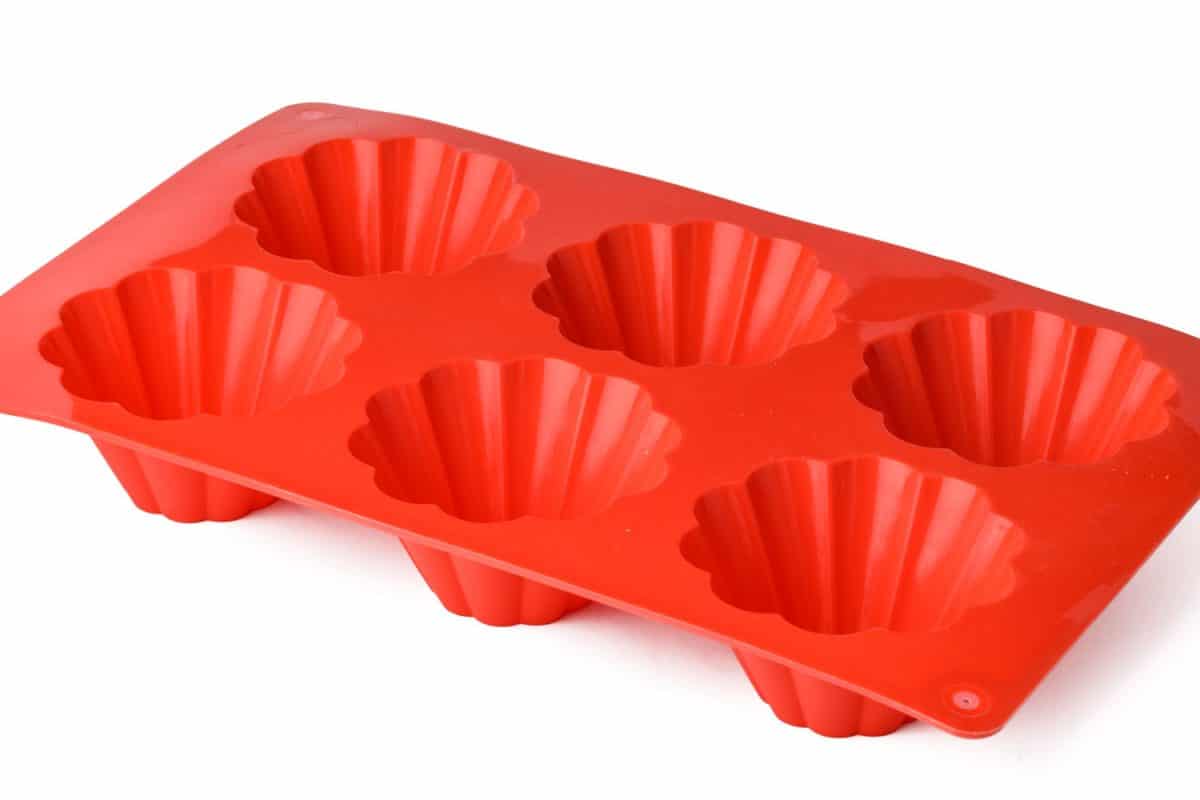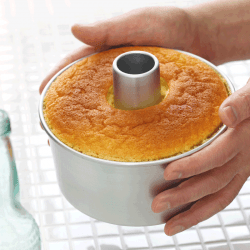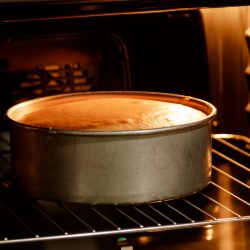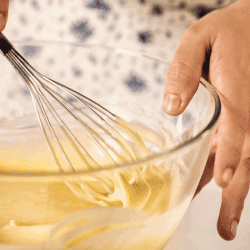Silicone has become one of the most common materials for cooking supplies in recent years. It can be found in everything from spatulas to ice cream molds. But is silicone oven-safe? We've done the research, and here's what you need to know.
Food-grade silicone is safe to use in the oven. While they can be put directly on the rack, it is easier to put them on a tray when baking with them. This is because the material is flexible and can be tricky to get in and out of the oven without a sturdy surface.
We'll talk more about using silicone safely and effectively, including silicone molds. We'll also see some awesome ideas for how to use silicone molds in your own kitchen! Read on to find out all about it.
![]()
At what temperature does silicone melt?
Most rubbers and plastics will melt at a specific temperature. Even silicon, the main component of silicone rubber, will eventually melt (although not until a blazing 2,570ºF).
Unlike those materials, silicone rubber ignites instead of melting at high temperatures. While this may seem even worse than melting, the ignition point for silicone is much higher than the melting point for most materials. Silicone rubbers vary in composition, but they typically don't auto-ignite until 842ºF (450ºC).
![]()
Are all silicone heat resistant?
All silicone is heat resistant at temperatures in a standard kitchen. Silicone rubber products usually contain materials besides silicone to either increase functionality or decrease costs. Because of this, they have different degrees of heat resistance but are safe at common cooking temperatures.
However, silicone can change at standard oven temperatures over time. If used at temperatures over 390ºF, silicone rubber can become more brittle. These changes are gradual, but you may notice your silicone molds becoming less flexible if used at these temperatures.
How do you use silicone molds in the oven?
Silicone molds are often used when setting cool foods, like jellos, into fun shapes. However, they are perfectly fit for oven use as well.
You can use a silicone mold in the oven the same way you would use a muffin tin or cake pan. Check that they are clean, grease them with oil or butter, fill them with your batter or dough, and put them in the oven!
You may find that your goodies need a little longer to bake in silicone molds because they don't conduct heat as well as metal.
Do you need to grease silicone molds?
While most silicone molds are nonstick, greasing them with oil or butter before baking helps ensure your treats come out smoothly and perfectly shaped. It also makes cleanup a breeze!
You can learn more about this topic and get some more great ideas for using your silicone molds in our article, "Should You Grease Silicone Molds and Cake Pans?"
How to clean silicone molds

One advantage of silicone over conventional baking trays is the cleanup. While it seems like you can never get metal baking dishes completely clean, silicone cleans up remarkably well.
Most cleanup will only take warm water, dish soap, and a soft sponge. Be sure to only use the soft, non-abrasive side of your sponge to avoid scratching the soft surface of the silicone. You can also wash your silicone molds in the dishwasher for even more convenience!
Silicone doesn't airdry quickly, so it's best to shake as much of the water off and then dry it with a kitchen towel after hand or machine washing.
While this routine should get you through the majority of your cleanup, there may be times when some bits stay attached. In this case, you can put your mold in a 350ºF oven for ten to fifteen minutes, then soak it in hot water. After the soak, even stubborn bits should be easy to wash away with a soft sponge and soapy water.
Baking Ideas for Silicone Molds
![]()
While you can use silicone cake and muffin pans just as you would use their metal counterparts, silicone's flexibility opens up new possibilities too! Let's check out a few.
Chocolate Pound Cake
This recipe from Real Housemoms starts as a straightforward chocolate pound cake baked in an impressive swirl mold. Then, using the same mold, you can create a chocolate coating for twice the chocolatey goodness!
This recipe calls for a swirl bundt mold, such as the one below.
Click here to see this swirl bundt mold on Amazon.
Cake Pops
Cake pops make full use of both the flexibility and the nonstick properties of silicone molds. They make great gifts and decorating them is fun for the whole family. Check out the video below to see how to make cake pops in a silicone mold.
Click here to see these cake pop silicone molds on Amazon.
Donuts
Why not save yourself some money and a trip to your local donut shop and whip some up at home? Silicone donut molds make it easy to do donuts on your own! Check out the video below to see how.
While round donuts are the classic, you can make them in even more fun shapes, like hearts and flowers, by getting a set like the one below.
Click here to see this donut mold set on Amazon.
Cannelés
These beautiful French pastries are traditionally made in small, copper molds. Silicone molds make it easy to whip up these decadent delicacies at home. You can see how to make them yourself in the video below.
To get the beautiful caramelization on the outside of these pastries, you'll need high heat. Make sure you make them in properly temperature-rated molds, like the ones below.
Click here to see these silicone cannelé molds on Amazon.
Are silicone baking mats worth the cost?
![]()
Molds aren't the only place you're sure to see silicone baking supplies. Silicone mats are popular additions to many bakers' arsenals.
These sheets of food-grade silicone are used like parchment paper. You simply put them in an oven tray and put your baked goods on top before throwing them in the oven. It prevents them from sticking to the tray and makes cleanup quick and easy.
They're not just used for baking cookies either. Because they prevent sticking and clean up so easily, you can use them when baking savory dishes, like fish or vegetables, instead of foil.
By using a silicone mat, you can eliminate a lot of kitchen waste. While these mats require a little more upfront investment, by using less parchment paper and foil you will end up saving money in the long run.
These days, multiple companies are making these silicone mats, but the trend started with the French company Silpat. They make them in various styles, but the original is the half sheet mat below.
Click here to see this silicone baking mat on Amazon.
Does silicone release toxins when heated?
While certain synthetic materials, like plastics and Teflon, can create toxic fumes at high temperatures, no such effects have been found when heating silicone. According to Canada's health ministry, silicone doesn't react with food and doesn't create any hazardous fumes.
It is silicone's safety and heat resistance that keeps many coming to this material for their cooking needs. You can learn more about the costs and benefits of silicone cooking utensils in our article, "What is Better: Nylon or Silicone Utensils?"
Final Thoughts
More and more silicone kitchen products keep coming out every year, and it's hardly a wonder. Nonstick, non-toxic, heat-resistant, and easy to clean, silicone is a dream material for a multitude of cooking utensils.
We've learned some more about silicone's properties and also seen some ways cooks are using silicone molds for fun and flair in their own recipes, from cake pops to cannelés. Whether you opt to use silicone products or not, we hope you learned something and found some inspiration for your own baking.
Happy cooking!









![fresh and homemade prepared batter for brownies with nuts served on a baking tray on rustic and wooden table - How Many Cake Mixes For A Half Sheet Cake? [And Full Sheet Too!]](https://kitchenseer.com/wp-content/uploads/2022/03/fresh-and-homemade-prepared-batter-for-brownies-with-nuts-served-on-a-baking-tray-on-rustic-and-wooden-table-250x250.jpg)
